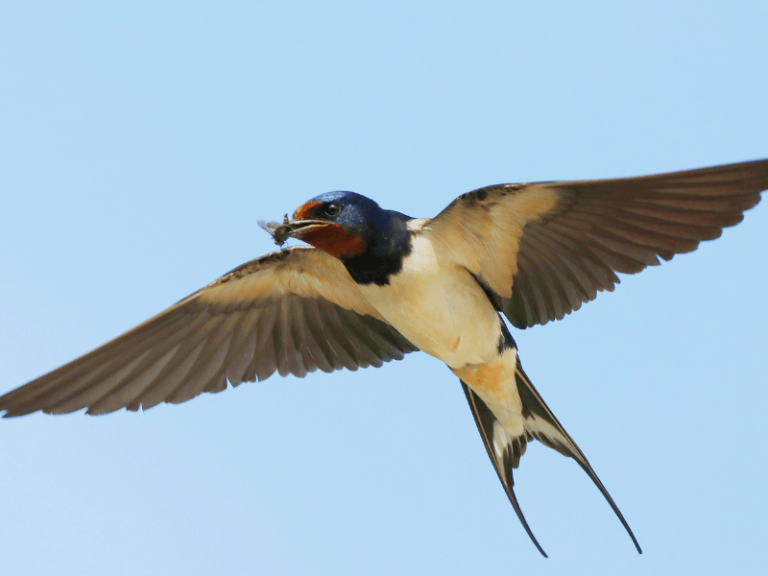Swallows generally fly from the south to the north at the beginning of March and return south when the autumn winds rise. The migration of swallows was recorded as early as the Qin and Han dynasties: “In the middle of spring, the swallows arrive. In the middle of autumn, the swallows return.” In Han dynasty music, there are also poetic lines such as “Flitting before the hall, the swallows are hidden in winter and seen in summer.”
Asian swallows usually overwinter in the Philippines, India, the Malay Peninsula, New Guinea, and northern Australia, and some overwinter in northern Taiwan. When migrating, swallows often gather in flocks of tens of thousands, following the 9°C isotherm, flying along reed-covered lakes, marshes, and riverbanks. Due to their high flight speed, they mostly migrate during the day, foraging on the ground while avoiding predators, flying for a while and then resting. During this time, one can often see flocks of swallows resting on the wires along the way. Swallows can fly about 140 kilometers each day during migration; if flying in a straight line, they can cover up to 290 kilometers a day.
When crossing the sea, swallows often choose routes with a series of islands to save energy. However, when flying over vast oceans, they use all their strength and fly at their maximum speed. Thus, they surprisingly reach land quickly after crossing the sea. However, crossing the sea is the most dangerous part of their journey. For Asian swallows, the South Pacific Ocean is the biggest challenge during migration. According to scientists, about 80% of the young swallows hatched that year perish on this route.
When swallows reach the migration season, they accumulate a lot of fat in their bodies before the long journey. They consume this stored fat to sustain life during the journey without eating any food, similar to an airplane refueling before takeoff. Generally, small birds kept in cages may starve to death if not fed for a day or two. However, fat, robust swallows full of fat can go for several days without food or water while crossing the sea without dying of hunger.

